Inpatient areas, defined by constant unpredictable inflow and movement of patients, are ripe for technology innovation. The reality in many hospitals is leaders and frontline teams struggling with phone calls, spreadsheets, meetings, and other manual means to track ongoing patient progress and bed capacity throughout the day.
Every non-clinical task inpatient stakeholders perform, including preparing patients for discharge, opening or closing units based on capacity and allocating staff, requires communicating or recording information. With manual tools, these operational functions are subject to inefficiency and low accuracy. Managing the status and activation of hospital or health system operational protocols and capacity is also challenging to system-level leaders.
Instead, with the right technology in place, a nurse going about their day on the floor can receive a text on their phone or tablet to indicate a patient who is ready to be discharged has been waiting for an unusually long time. They can click the message to see suggested actions to take and immediately address the situation, straight from their device. System leaders, meanwhile, can see performance metrics across the organization visualized on any device in any setting, and delve into these for granular information on operations in a particular site.
Technology that analyzes and distributes information automatically is key to improving processes in the inpatient space. This is made possible by a centralized, modern, AI-powered command center, implemented through strategic change management.
Building the “virtual” command center to improve process and support better patient flow
The phrase “command center” tends to summon an image of “screens on a wall”, or a single physical location that connects multiple hospital departments through manual dashboards and other visualization functions. Health systems and hospitals now have the capability to go beyond “admiring the problem” in a fixed, central location by using artificial intelligence and workflow automation to align leaders and care teams throughout the organization and optimize patient flow.
The new “virtual” command center is characterized by automated hybrid operations. It can track, process, and visualize the operational data of multiple physical locations, enabling system-level improvement, and be digitally connected across sites and individual devices. It leverages leading-edge technology like advanced analytics and AI to deliver actionable information based on relevant, up-to-date data like discharge statuses and staffing levels, and coordinates daily operations through automated communications.
This type of virtual command center, deployed through strategic change management, supports efficient, streamlined patient flow through access to key information, delivered without friction. The virtual command center gives system leaders the operational knowledge they need to improve system-wide performance, so they can proactively adjust patient capacity levels or redistribute resources across sites, while helping nurses and leaders on the floor immediately respond to patient flow issues, as they receive updates on discharges or staffing needs on their mobile devices.
How to create and deploy the “virtual” command center: three key elements
The reimagined inpatient command center, which leverages updated technology in a way optimized for users, relies on three critical elements to both build and execute in the organization:
1. AI-driven, future-focused recommendations that are predictive and prescriptive
Health systems are already capturing a wealth of operational inpatient data. A virtual command center builds on this data through advanced analytics and AI, which use data to not only show what is happening right now, but to predict what is likely to happen and prescribe impactful action. These analytics support the proactive management of every single patient discharge journey, reminding staff of upcoming discharges and flagging delays and likely upcoming barriers, such as needed tests or post-acute accommodations. They also predict needs for staff coverage in coming days and weeks, and suggest the most efficient allocations.
These tools drive optimal use of resources and increase access to inpatient care. Through use of AI solutions that predicted upcoming discharges and likely barriers, a leading Florida health system decreased discharge processing time by 10%, even while experiencing a 23% increase in average daily census. The health system also reduced average length of stay by 13 hours while experiencing the highest census levels in facility history.
2. Automated interactions throughout connected sites
While predictive and prescriptive analytics provide valuable information, that information must still be communicated to frontline staff and leadership. Automated interactions, such as immediate mobile notifications that a patient’s discharge is delayed, a unit will soon be experiencing a surge of admissions or a recommendation that the ED should go on diversion due to current capacity constraints, eliminate the need for excess calls, meetings, and spreadsheets. Deploying this automation as part of a virtual command center fulfills the opportunity to improve process and drive efficiency by automating interactions at both an organizational and individual level.
Automating these practices to promote frictionless access to information will have a swift impact on organizational efficiency as well as staff satisfaction. Florida-based health system Health First repurposed 2,600 weekly hours by streamlining communications through automation, and also engaged 200 employees every shift through a central automated platform.
3. Change management and the support of expert partners
The implementation of successful command center strategy combines transformative technology with a strong organizational change management. This begins with an understanding of the health system’s unique culture, operations, challenges, and goals to be met through the execution of the command center strategy. It continues with an incremental, people-centered approach of identifying the highest-impact use case to address, aligning on the associated KPIs, implementing technology-enabled process automations to optimize the specific use case, and tracking the KPIs to monitor progress. Focusing in the early stages on small “wins” and single processes, such as automating interactions among all the care team members involved in a single possible patient discharge journey, creates a foundation to successfully expand the technology and its use without disrupting normal processes.
An expert partner who brings knowledge of healthcare, technology, and process improvement, and shares the health system’s desire for excellence, is key to supporting this sustained change management. To this end, LeanTaaS, a company that comprises technology leaders, clinicians, process improvement and nursing experts, provides “Transformation as a Service” along with our AI and automation technology offerings. This involves establishing our health system partner’s top KPIs and financial drivers, then helping create an operating structure optimized to those ends.
Throughout our relationship with the health system, we hold regular meetings and communications to track progress, learnings, and opportunities for further improvement, with the goal to always drive value to staff and deliver ROI. Overall our partnership contributes to the building of a reimagined, customized command center that supports the processes and people directing patient flow throughout the health system.
“Our average daily census is now in the mid 800s and we have not gone on diversion, refused transfers or admission, or canceled a surgery or procedure,” says the Director of Logistics, Flow and Observation at a Florida health system. “LeanTaaS’ tools enable us to see where the potential roadblocks are in advance and act.”
A version of this article was originally published on Becker’s Hospital Review.





